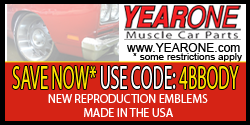I haven't got that far. I was waiting to see if there was a correct/preferred location for the locking pawl before torquing down the nuts.Not that I'm aware of. Whichever slot in the big adjuster nut aligns best with the pawl under one of the five nuts. What did you set your endplay to? My 67 FSM said .013-.023". I went with .010 since I put new bearings in. Allowed for a little wear in.
You are using an out of date browser. It may not display this or other websites correctly.
You should upgrade or use an alternative browser.
You should upgrade or use an alternative browser.
Axle & Diff Rebuild Time
- Thread starter rklewis1005
- Start date
I would snug up the 5 nuts first, then go through the bearing adjustment procedure. On the wagon, I ran the adjuster down till it wouldn't move easily, thumped the axle several times with a dead blow hammer while rotating the axle both directions to help seat it, go to the other side and thump/rotate. Back to the adjuster side, same procedure, then the other. Set your dial indicator up on the backing plate, get it zeroed, then pull the axle flange straight out and then push in. Don't let the axle rotate. How much did the indicator move? Do the thump/rotate/switch sides/thump/rotate again and then recheck with the indicator. All of this will help get those bearings set and remove excess freeplay. How much movement do you get on the indicator? Adjust as needed. Thump/rotate/switch again. Re check adjustment. When you're where you want to be, under which of the five nuts will the pawl line up best on the big adjuster slots? Loosen that nut, slip it under, cinch it and the other four down. Maybe check again before you call it good. And as I learned this time, having an empty backing plate as opposed to loaded with shoes etc, made it easier to keep the indictor base stuck on. I used to place it on the shoes, which can move, throwing the measurement off.

Similar threads
- Replies
- 33
- Views
- 2K
- Replies
- 12
- Views
- 2K
- Replies
- 16
- Views
- 759















